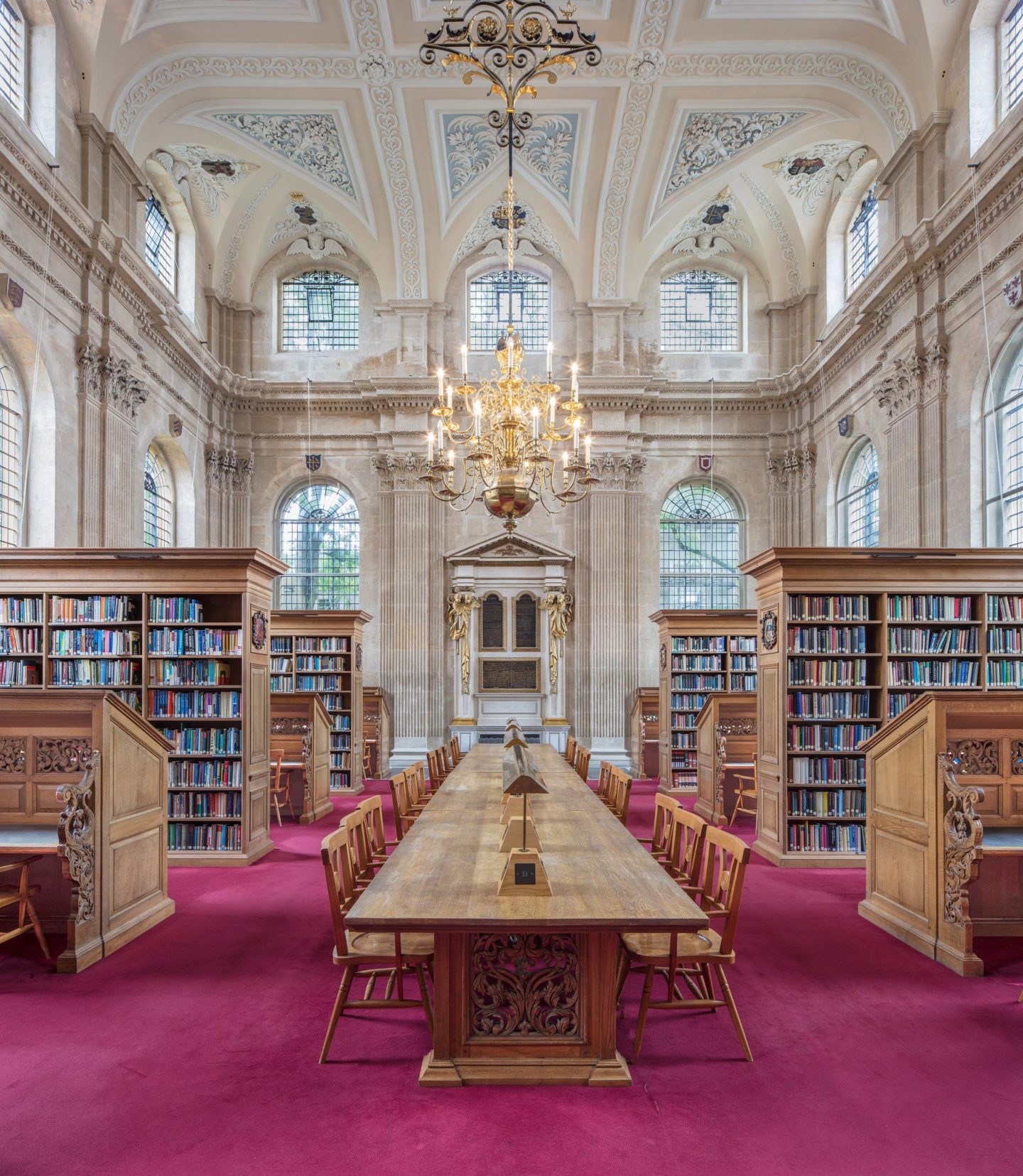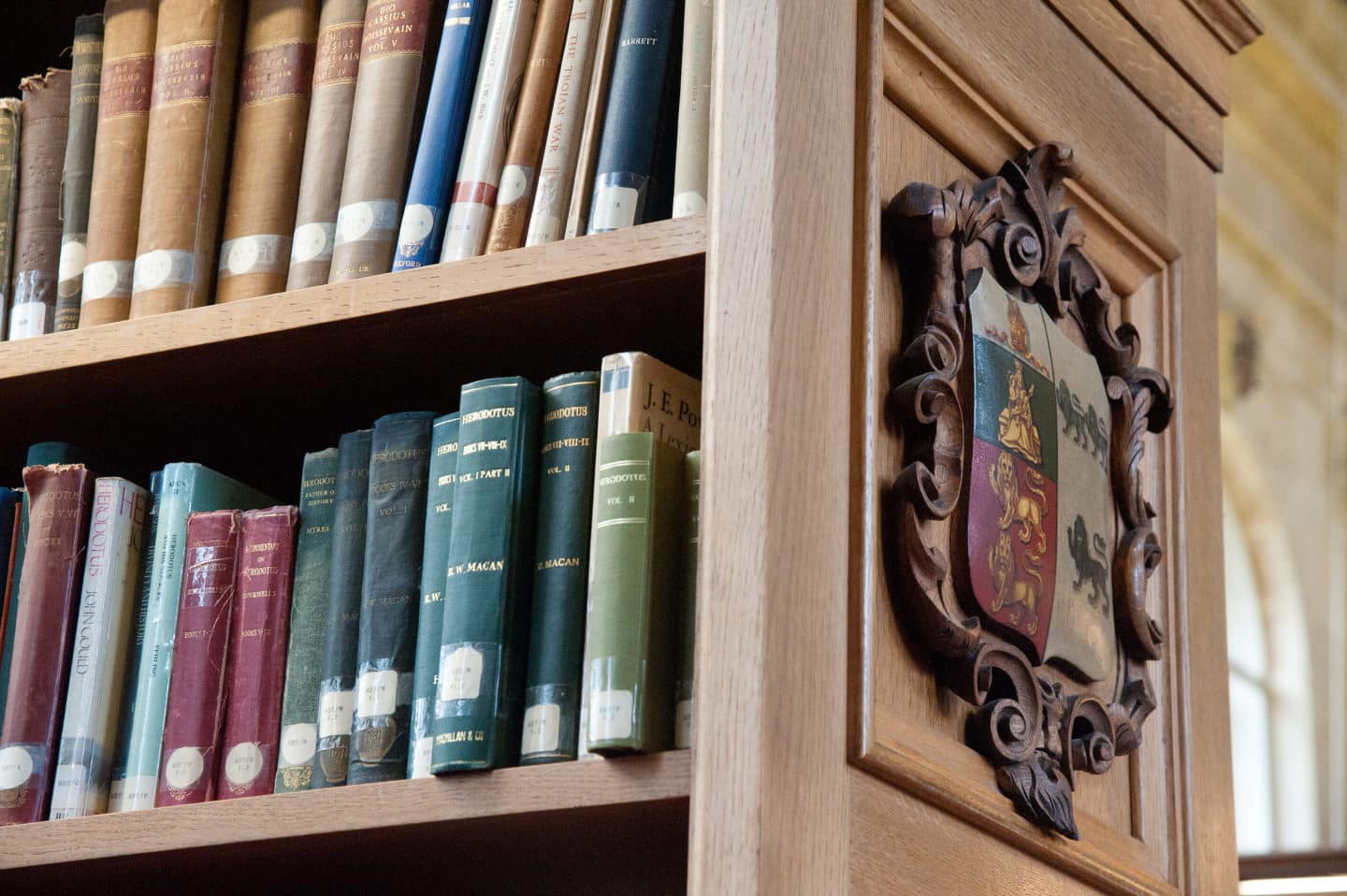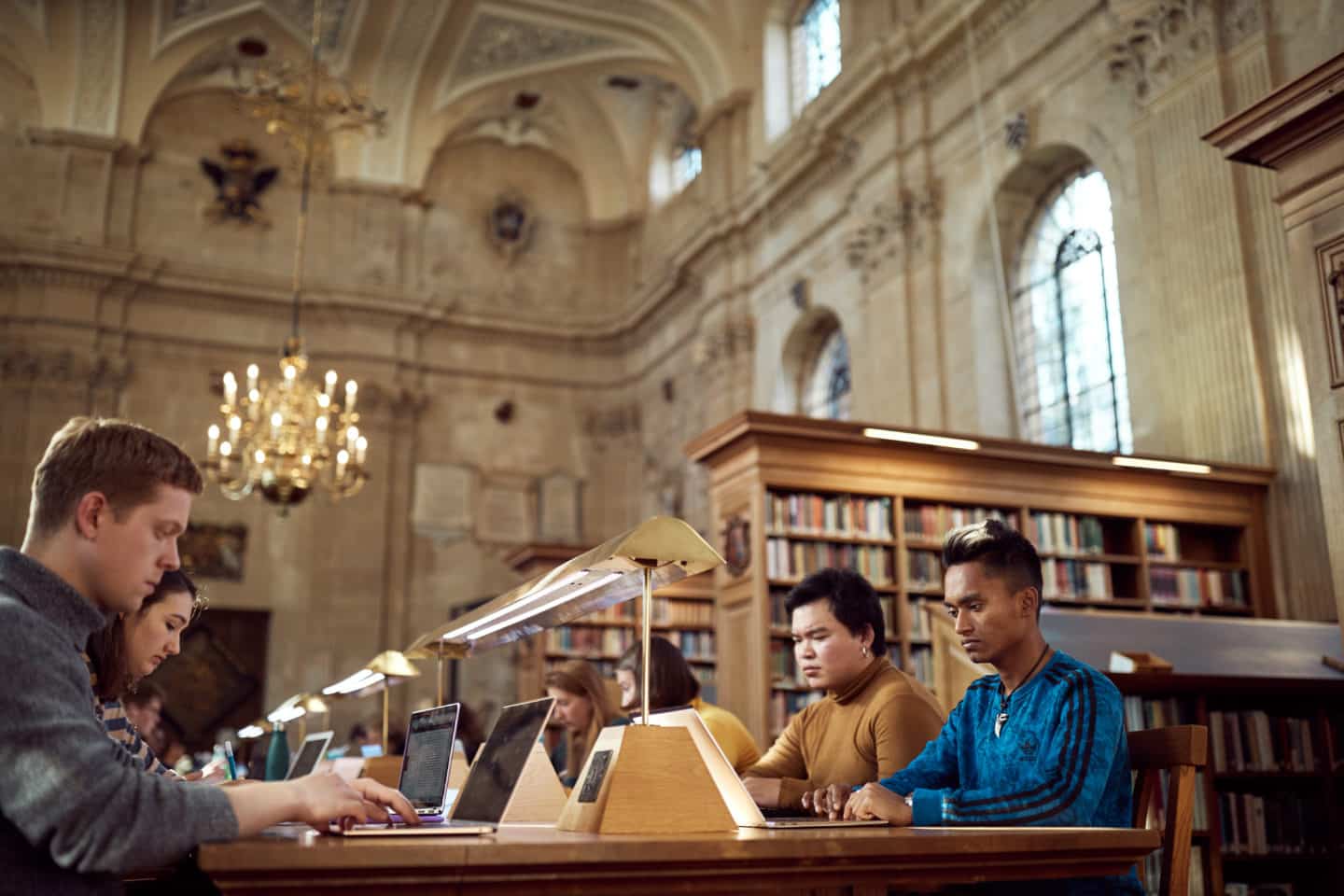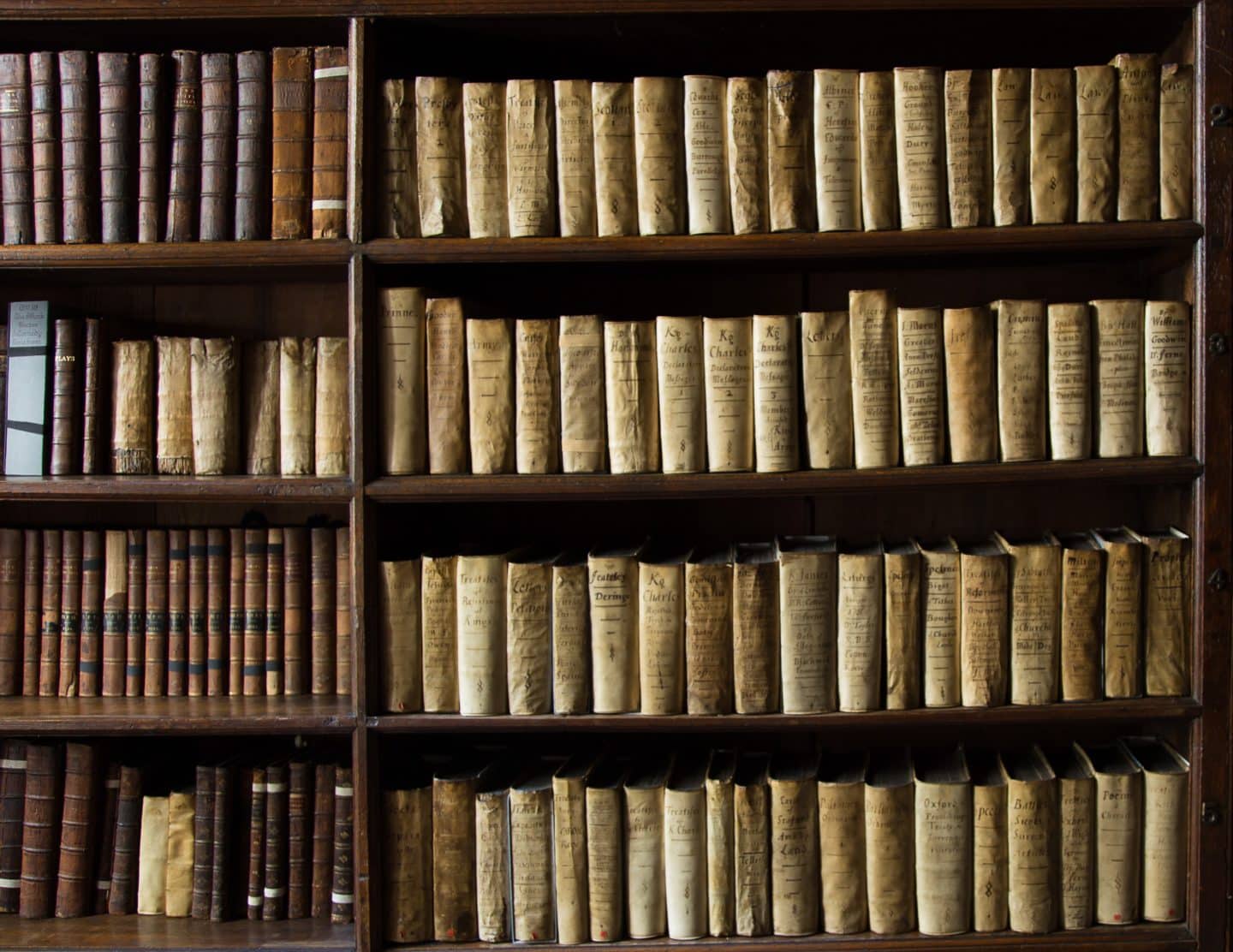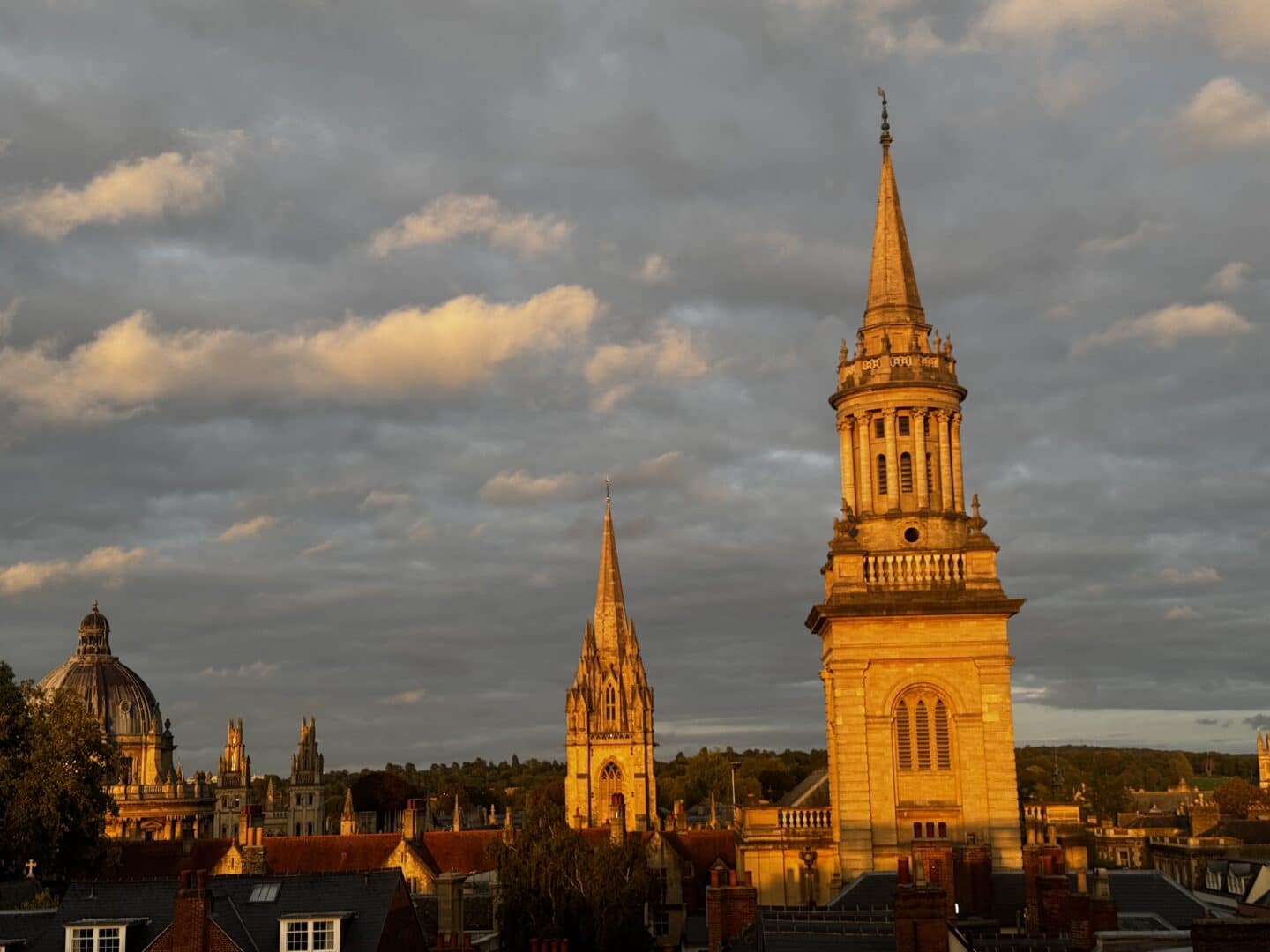
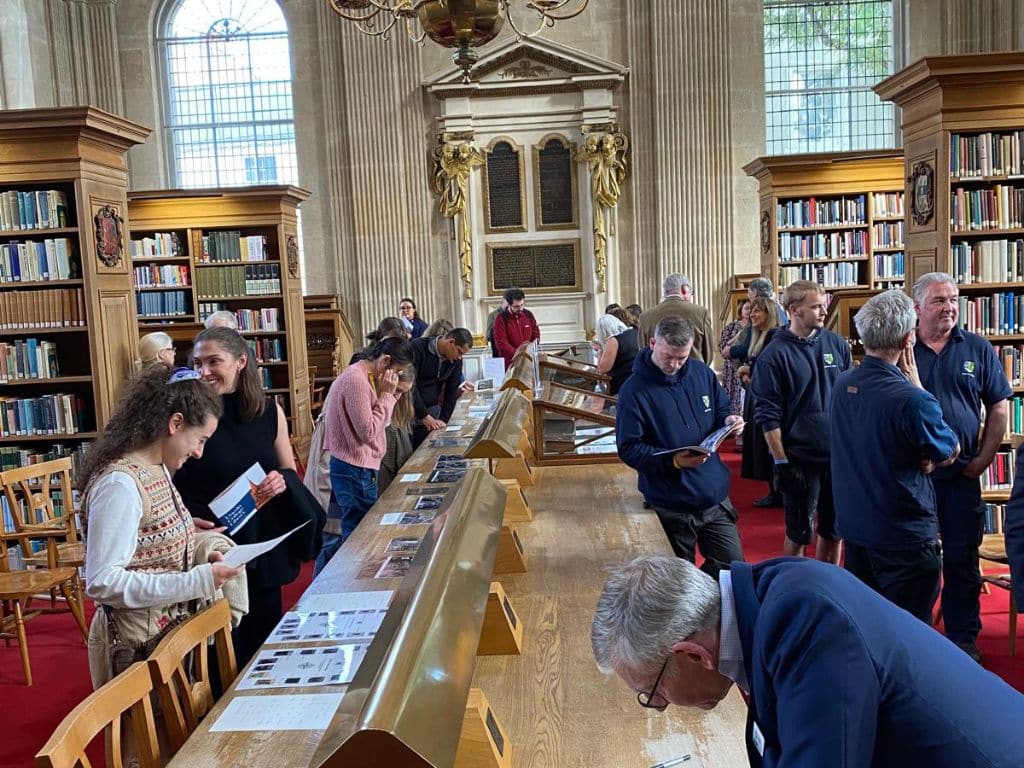
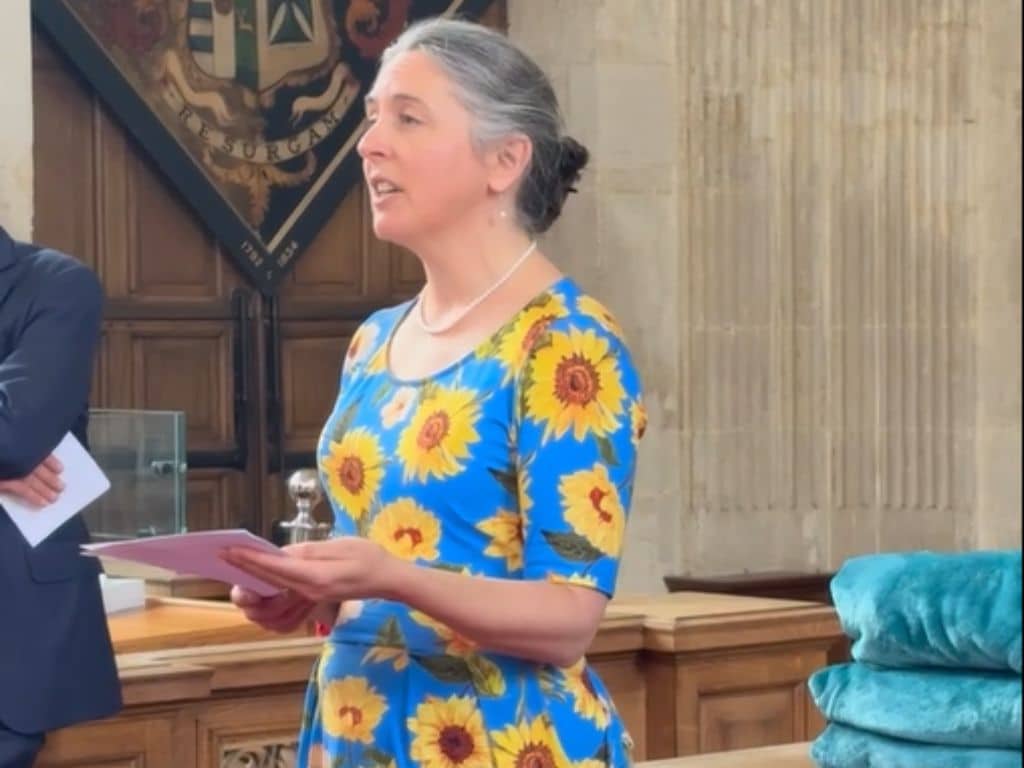
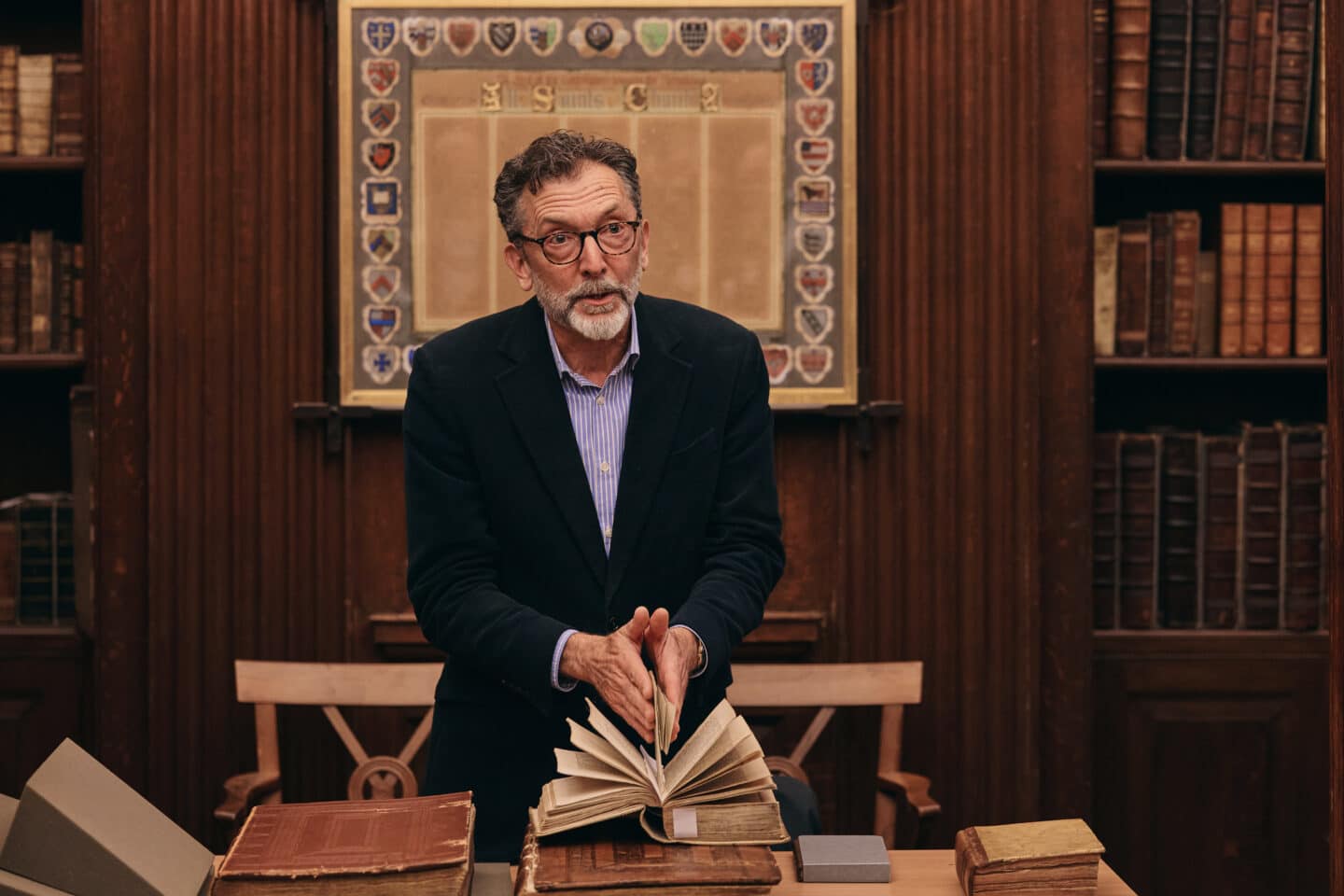

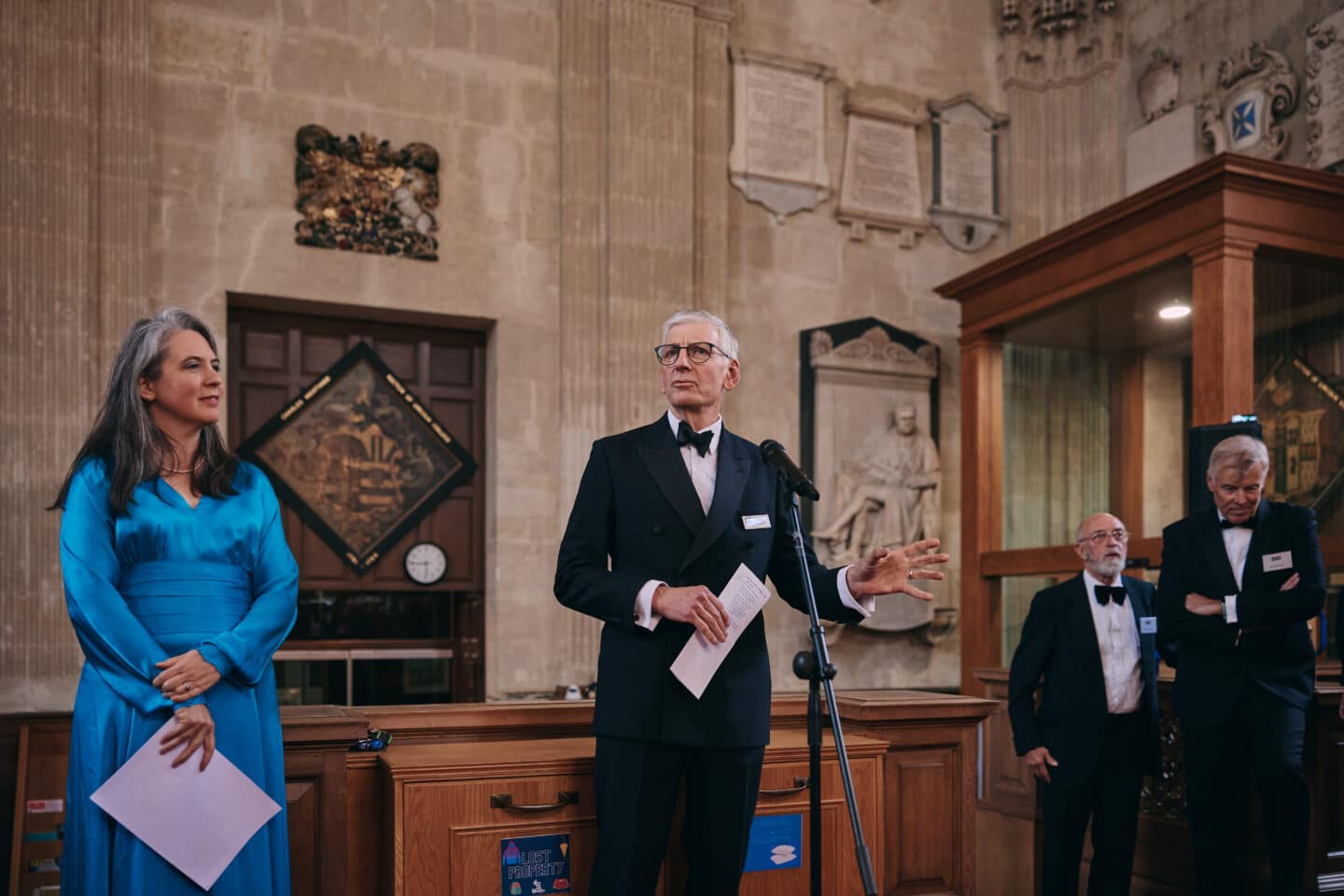
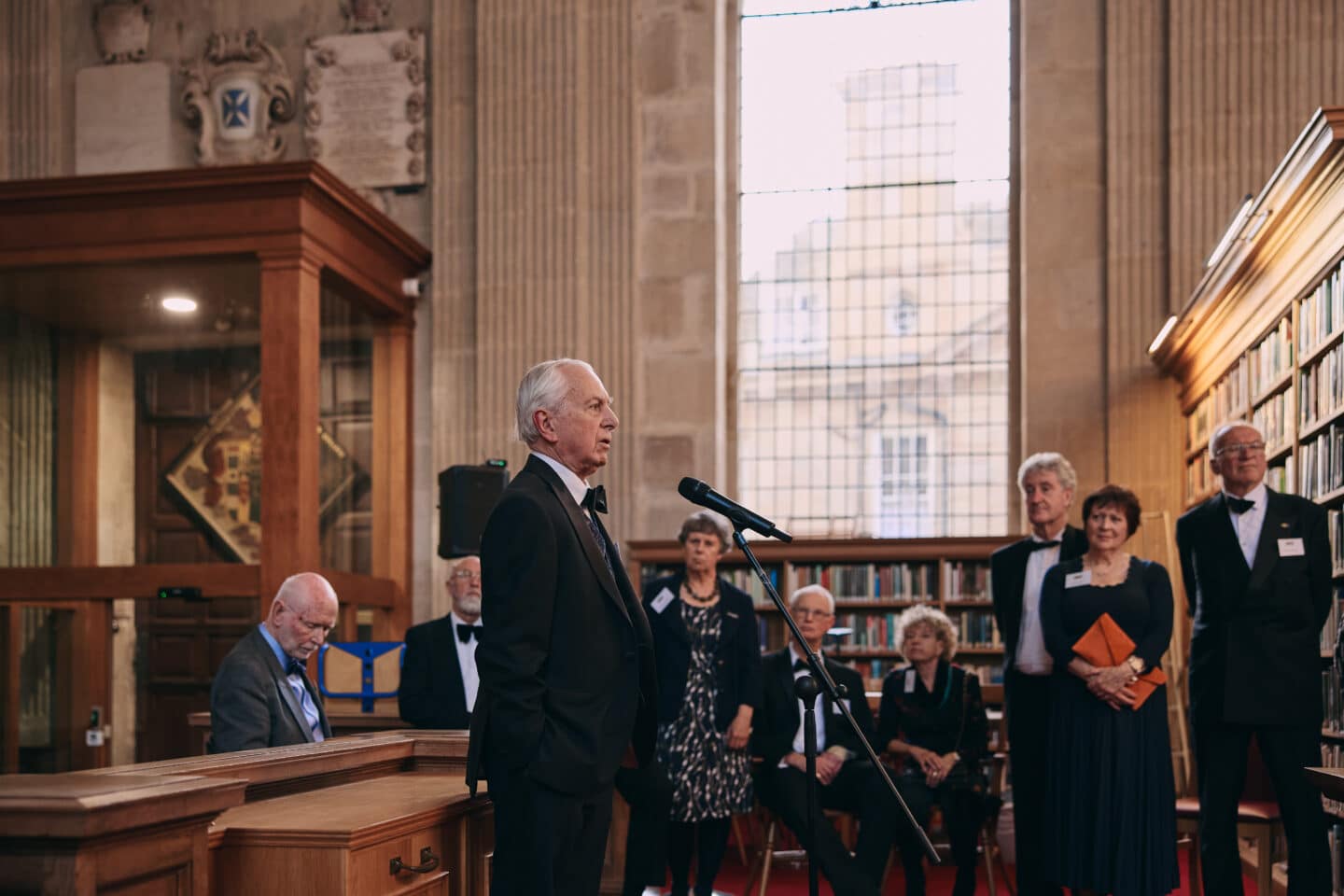

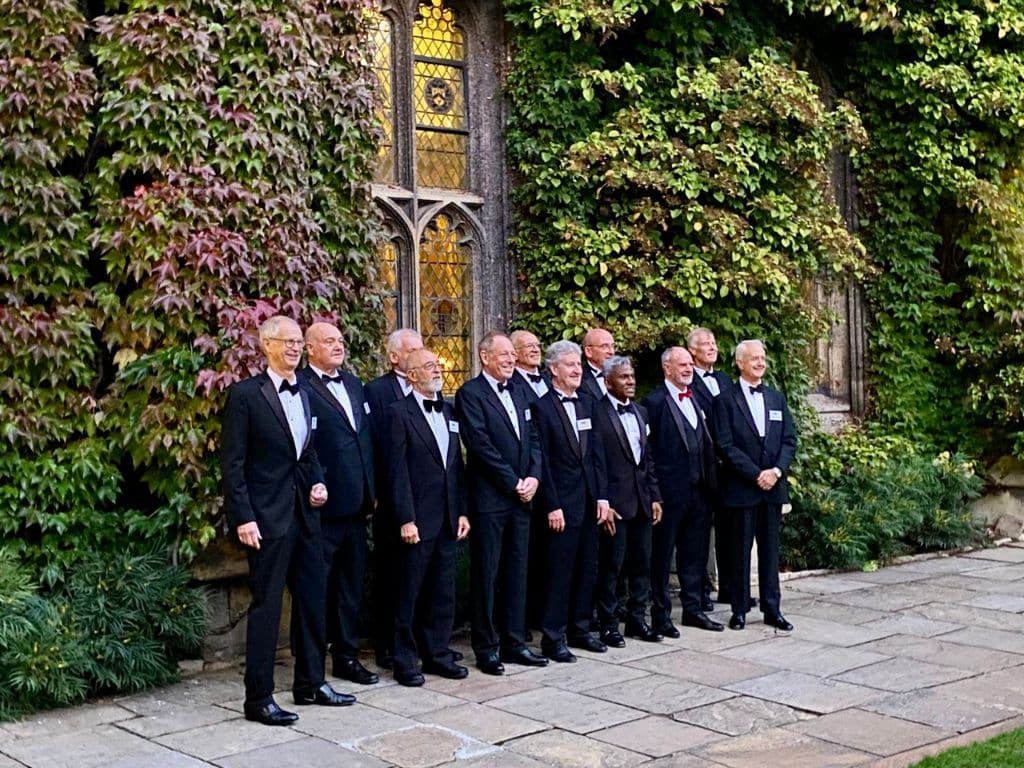
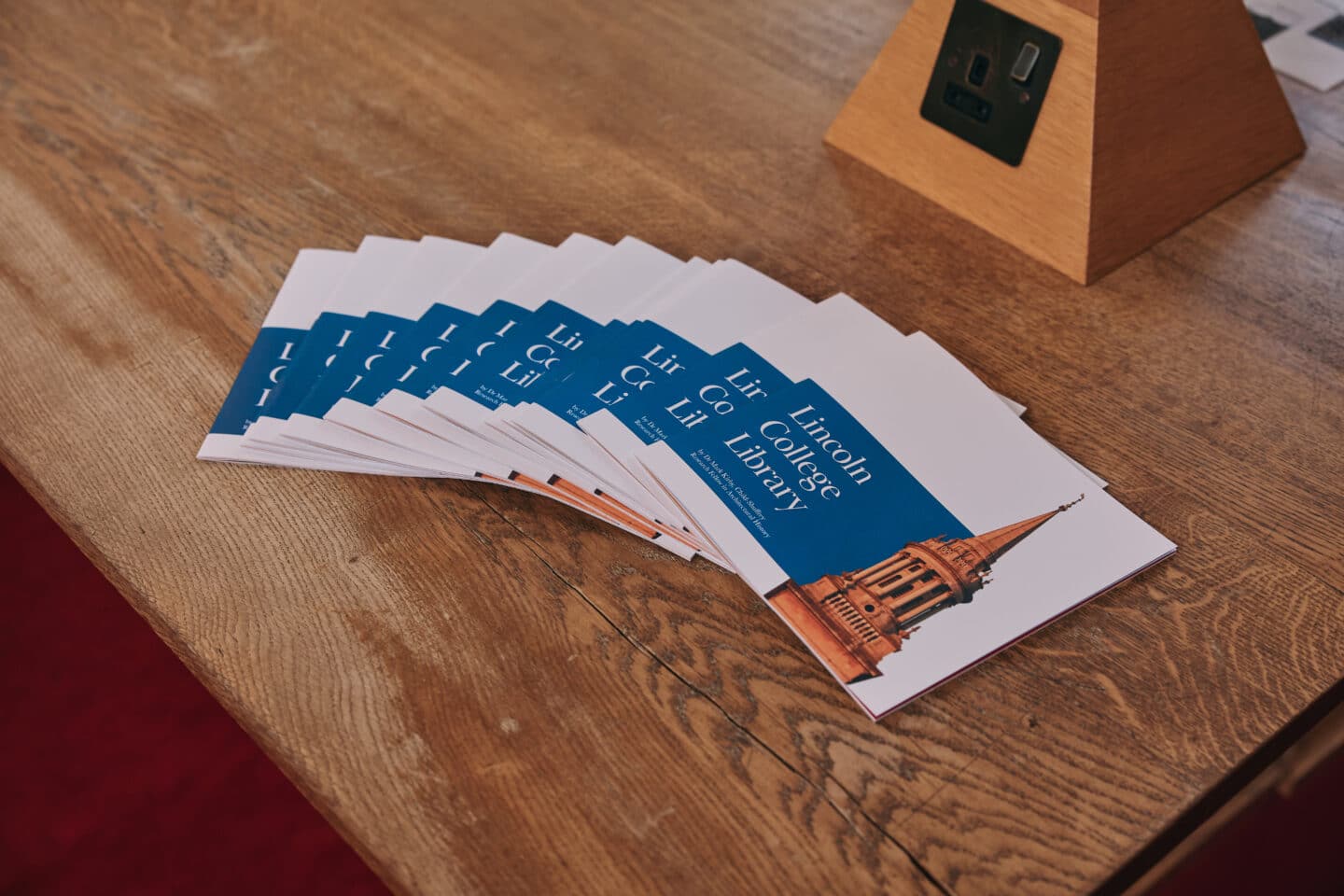
Lincoln marked 50 years since All Saints Church was transformed into our much-loved library with a series of special celebrations, bringing together the College community and friends to honour this stunning space that continues to inspire all who visit and study here. We were especially delighted to welcome back our 1975 alumni - who attended the College during the conversion - for a special Gaudy.
Before the conversion
All Saints Church stood on Oxford’s High Street for centuries, its history closely bound to Lincoln College. By the mid-twentieth century, however, it had become a largely redundant parish church. In 1957, the vicar, Rev. R. R. Martin, suggested transferring it to the College, a proposal that eventually transformed the church into Lincoln’s library.
All Saints was one of three parish churches endowed to Lincoln when it was founded in 1427. Rectors of the College also served as rectors of the parish, and Fellows had stalls in its quire.
Rebuilt after the collapse of its medieval spire in 1700, it became Oxford’s first classical parish church, shaped by the dean of Christ Church, Henry Aldrich, who was the principal designer, and Nicholas Hawksmoor. Hawksmoor learned his craft in Christopher Wren’s office and the spire is undoubtably attributable to him and draws upon his experience designing steeples for Wren’s London churches.
Though All Saints flourished in the nineteenth century, the parish’s population dwindled in the twentieth. By the 1960s services attracted barely any communicants.
Negotiating closure
For Lincoln, the prospect of conversion was timely. The existing library (completed in 1906 and now known as the Berrow Foundation Building) had become too cramped by the 1950s and new space was urgently needed. The opportunity to acquire All Saints was an obvious solution. A proposal from Brasenose that the two colleges share use of the building was swiftly rebuffed.
All Saints offered a solution just across Turl Street.
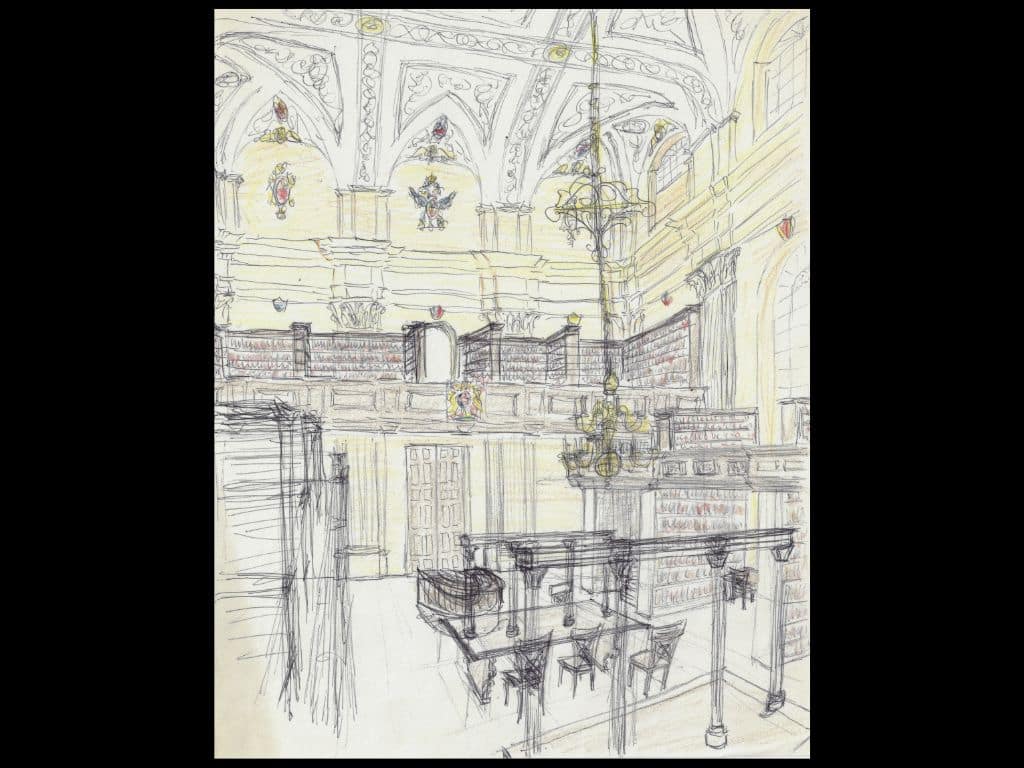
Plans and principles
Confident of eventual success to convert All Saints into a library, the College began discussions with architect Robert Potter in 1968. Rector Walter Oakeshott and Fellow Donald Whitton played important leadership roles in developing the aesthetic and practical elements of the design, supported by advice from architectural history luminaries Sir John Summerson, Howard Colvin and Edward Croft-Murray.
Potter’s initial plan proposed galleries to maximise shelving, but Oakeshott and Whitton were not keen. Summerson suggested investigating whether the medieval church had once had a crypt. Excavation in 1971 did not reveal a crypt, but deep foundations allowed a basement to be created. This provided space for the Senior Library and avoided cutting across the main interior with intrusive galleries.
Whitton argued strongly for preserving Henry Aldrich’s original proportions, setting the new raised floor at a level that respected the building’s classical symmetry. His insistence helped maintain the integrity of the eighteenth-century design.
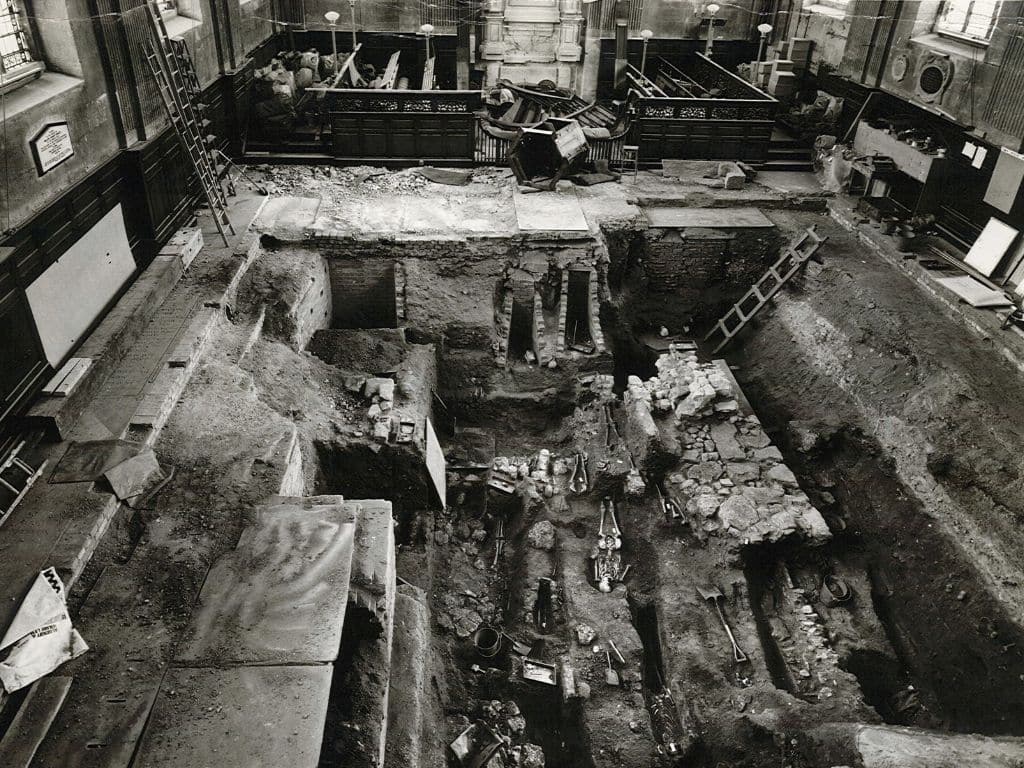
Archaeological work in 1973–74 uncovered numerous burials.
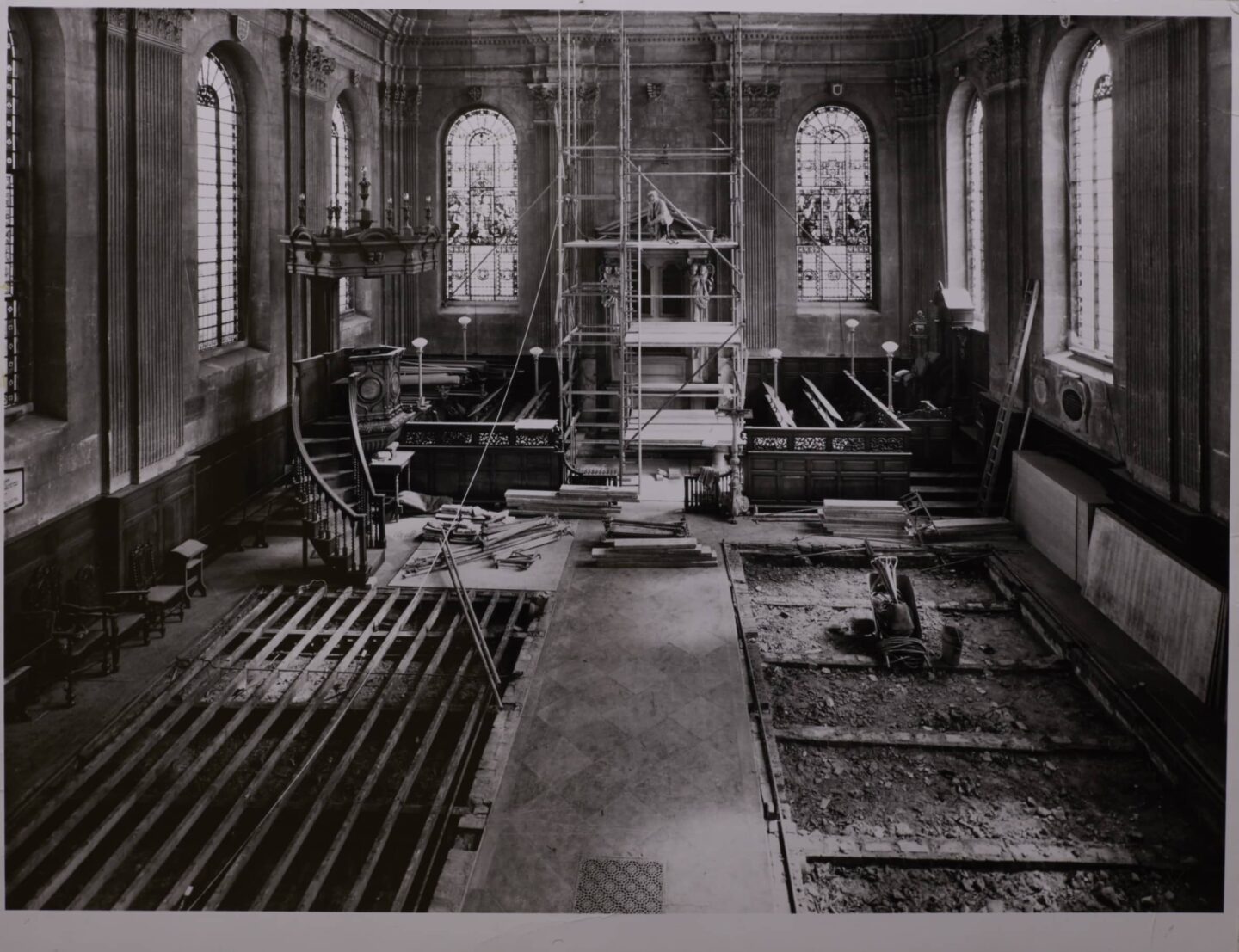
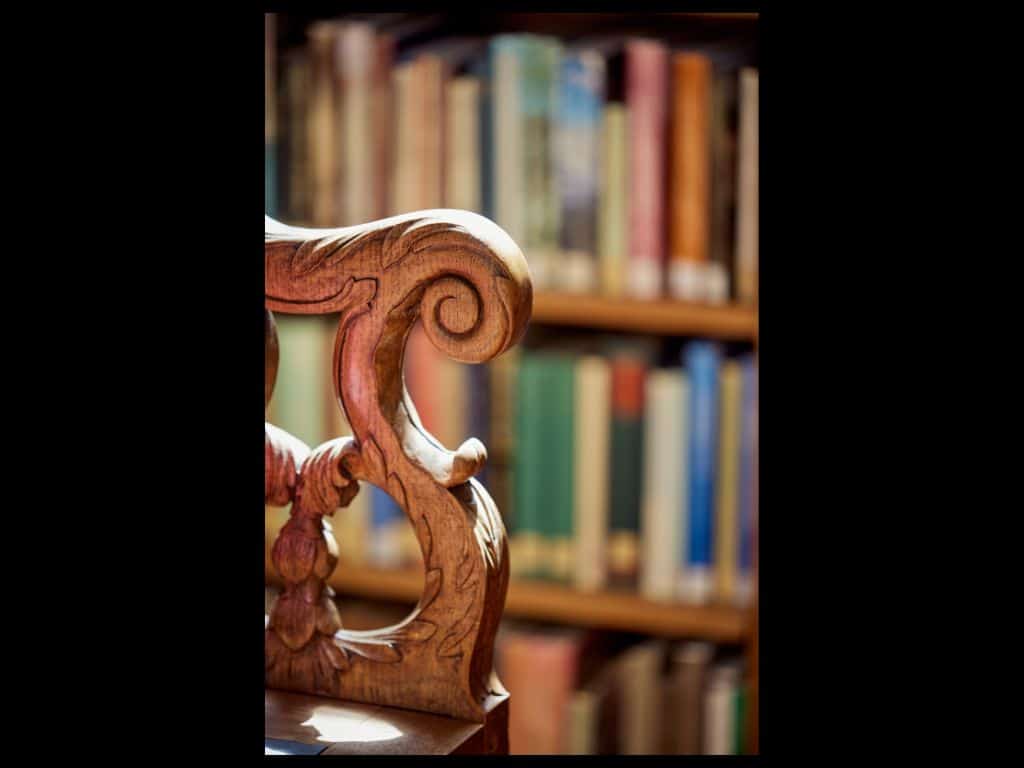
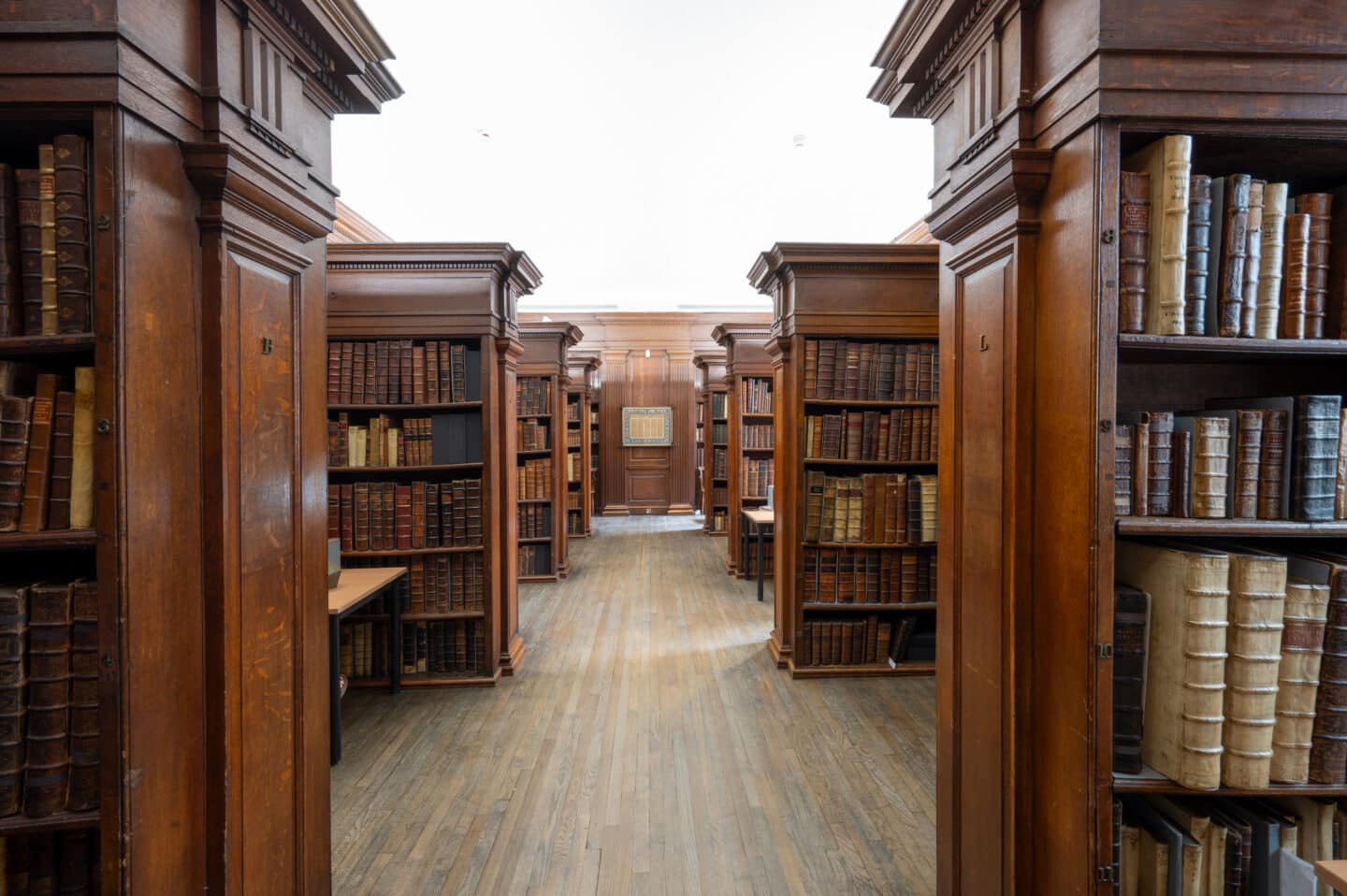
Burials and reuse
Archaeological work in 1973-74 uncovered numerous burials, whose remains were “reverently re-interred” in the churchyard to the north. Several of these burials were of former rectors. Their ledger-stones were re-laid into the raised floor of the upper library, while most of the wall-mounted memorials were repositioned at the west end.
Meanwhile, Oakeshott oversaw an extensive reuse of the chancel’s carved woodwork. For example, he “recycled” the armrests from the Fellows’ stalls from the chancel as dividers in the study carrels. Scrollwork panels from the chancel enclosure found new use at the front of the main floor and elsewhere, and other pieces of carved work, thought to have come from a 1630s screen in Magdalen chapel screen were also incorporated.
The largest component of “recycling” was the relocation of the bookcases of the Senior Library (originally in what is now the current SCR and moved to the new library built in 1906). These bookcases, made in 1739, not only needed to be adjusted to fit the smaller space in the excavated basement, but the floor needed to be lowered further than the main student library to accommodate them.
Opening a new chapter
By the early 1970s, the transformation of All Saints was evident. Supernumerary Professor Stephen Gill, who was a new Fellow when the construction project started, recollects, “How gloomy All Saints was, with its large balcony and, I think, stained glass windows. I went in once during the construction and marvelled at the contrast of work going on. A digger was at work gouging out what was to become the lower floor of the library, while above someone was gilding the ceiling. I think also that the digger unearthed a charnel pit containing many bones. The library became a light and lovely place in its stead.”
The library was formally opened in 1975 by Harold Macmillan, Chancellor of the University, and was generally well received. Osbert Lancaster, in Country Life, judged the conversion “ingenious and praiseworthy”, while Marcus Binney of SAVE Britain’s Heritage admired the quality, despite regretting the removal of furnishings.
What had been a dwindling parish church became a bright, spacious library that continues to serve Lincoln students and academics. The conversion of All Saints was more than a practical solution to a cramped collection; it was a careful balancing act between preservation and reinvention, producing one of Oxford’s most distinctive and beautiful libraries.
This article was adapted from Dr Mark Kirby’s writings on the Lincoln College Library in honour of its 50th anniversary.
Share your library memories
The Lincoln community is warmly invited to share their memories of time spent in the library to go in a special 50th Anniversary Memory Book. Please send text and photos to the librarian, Lucy Matheson.
